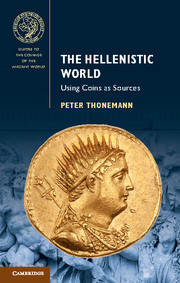6 - Currency systems
from Part III - Political economy
Published online by Cambridge University Press: 05 December 2015
Summary
Why mint coins?
Why did Hellenistic kings and cities mint coins? An easy question to pose, but not so easy to answer. In the modern world, most states operate with ‘fiat money’ (Latin fiat, ‘let it be so’), where governments and central banks can increase the amount of money in an economy simply by printing more money (or more complex variants such as quantitative easing). Governments can pursue reasonably sophisticated monetary policies by manipulating the money supply, thereby controlling interest rates and inflation. Few of these measures were available to ancient states. Money in the ancient world mostly took the form of ‘commodity money’, coins which were worth their weight in scarce commodities such as gold or silver. Increasing the money supply meant either digging more gold or silver out of the ground or, more straightforwardly, invading another state and annexing its precious metal reserves, as was done by Alexander the Great between 334 and 330 BC (see Chapter 1 above) and on an even more massive scale by Rome in the second and first centuries BC (Kay 2013; 2014: 21–42).
Without doubt, the main reason why ancient states minted coins was in order to make state payments: paying armies, subsidizing the food supply, funding public works and so forth. In a classic essay, Chris Howgego showed that this can seldom have been the whole story (Howgego 1990). States were aware of the need for a steady supply of coin for day-to-day exchange; they periodically renewed worn coins, and could strike coins for purely ideological reasons (advertising the accession of a new ruler, or proclaiming a city's independence). The problem for us is to judge how far these various ‘secondary’ motives drove minting behaviour in the Hellenistic world. Our answer will have wide-ranging consequences for our understanding of the Hellenistic economy. Did kings and cities have anything resembling a ‘monetary policy’? Were they aware of phenomena such as inflation and liquidity, and did they try to control them through the coin supply?
By way of example, let us take a look at one recent approach to Hellenistic royal coin production. In his studies of the Seleucid royal economy, Makis Aperghis has argued that the Seleucid royal silver coinage was (at least in peacetime) a ‘replacement’ coinage (Aperghis 2001: 92–5; 2004: 228–46).
- Type
- Chapter
- Information
- The Hellenistic WorldUsing Coins as Sources, pp. 111 - 127Publisher: Cambridge University PressPrint publication year: 2016

